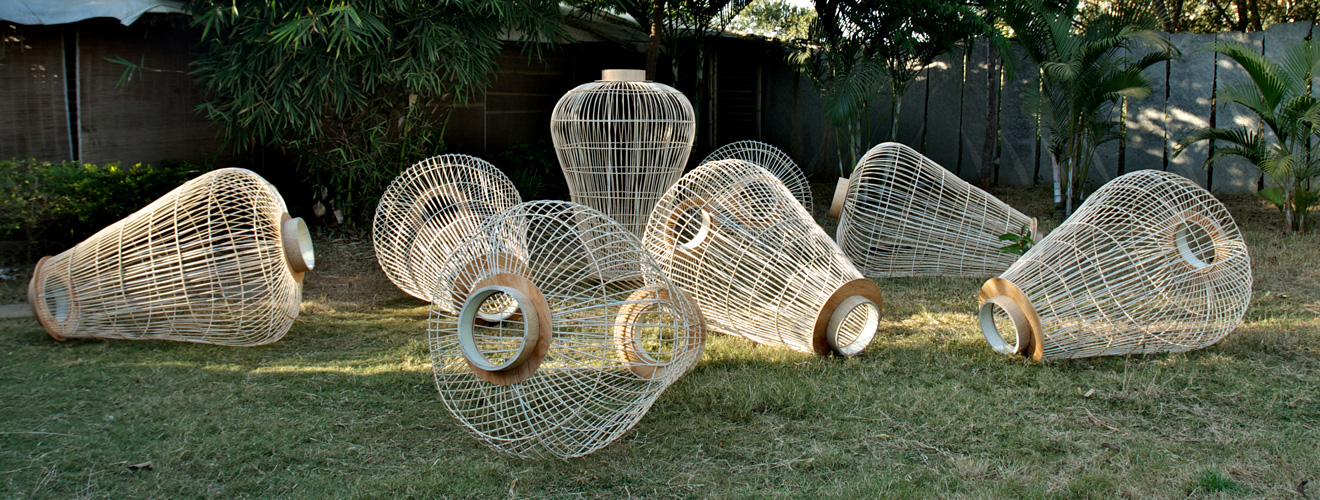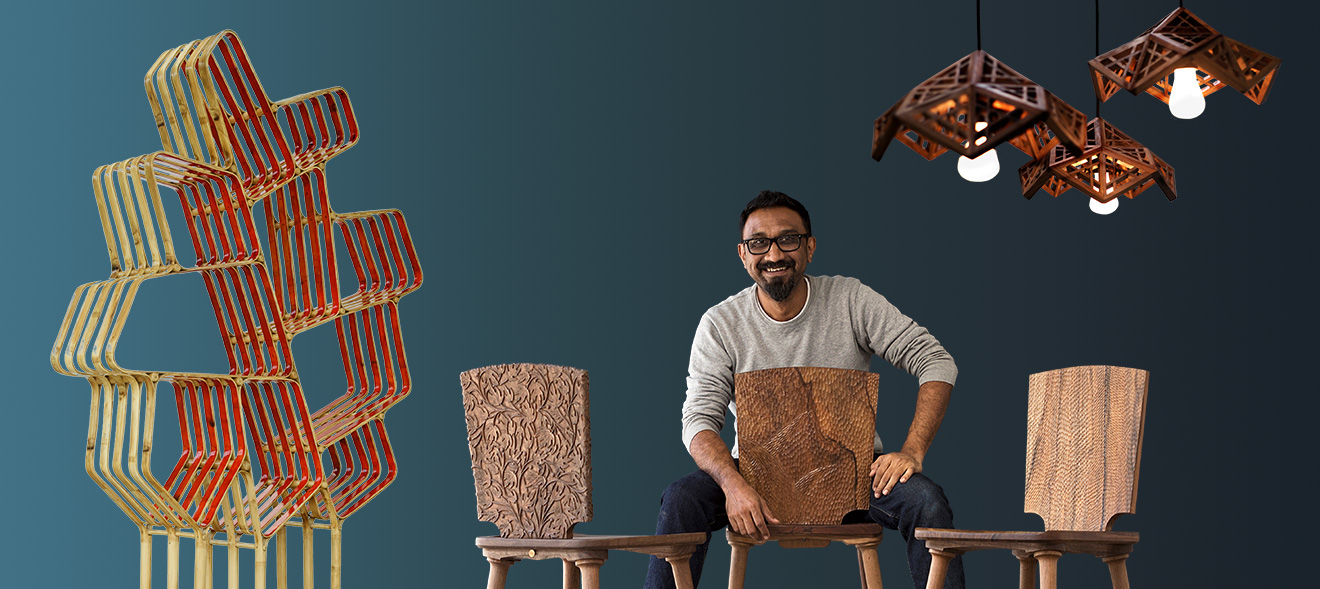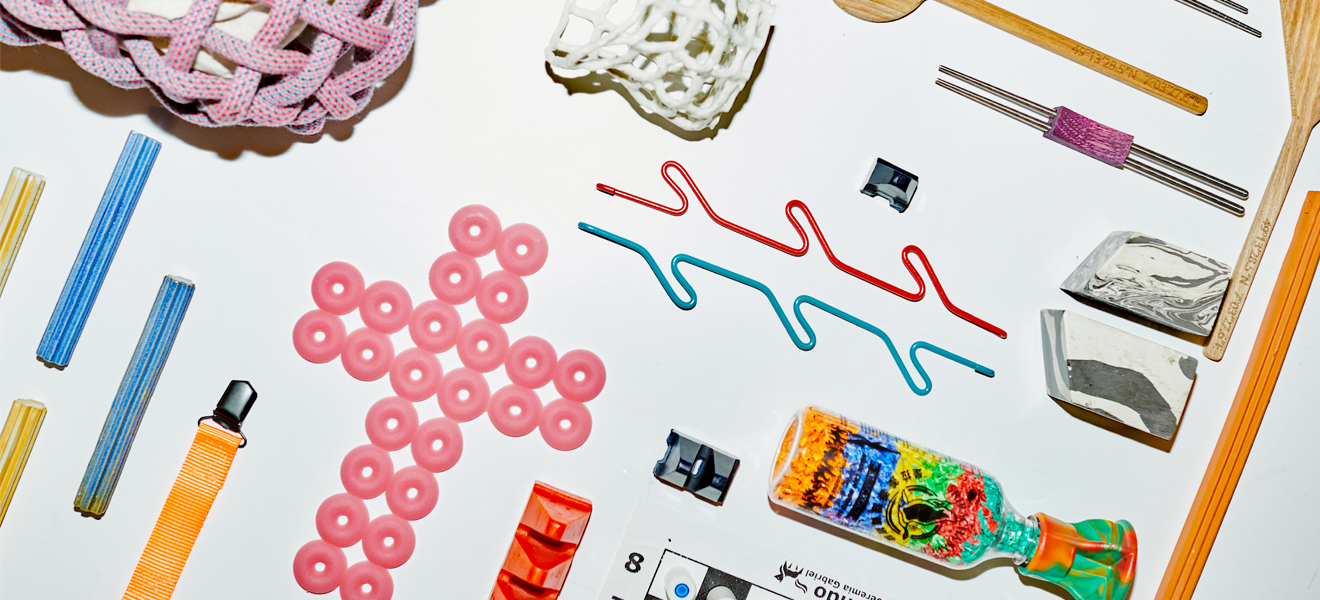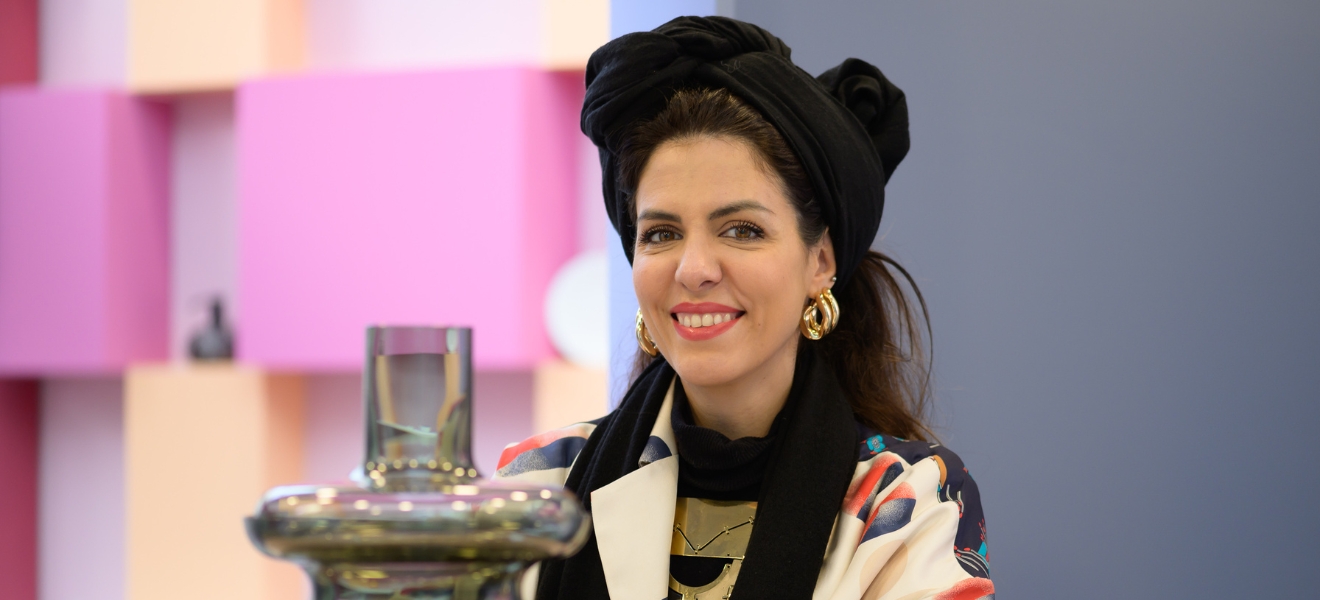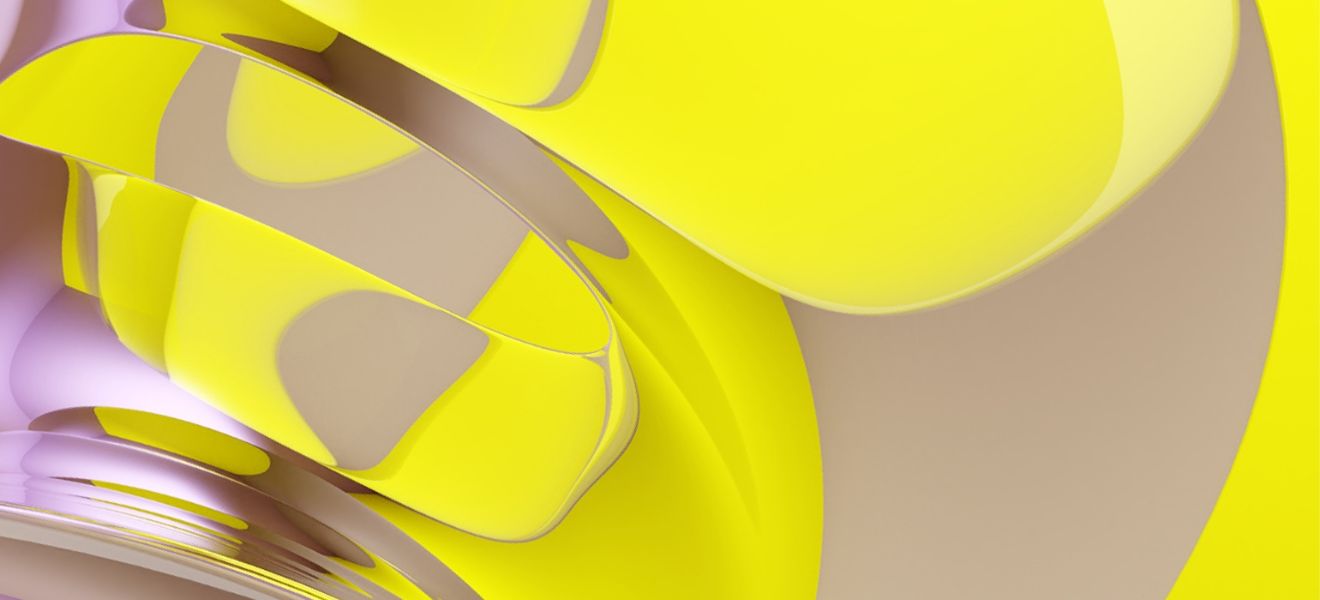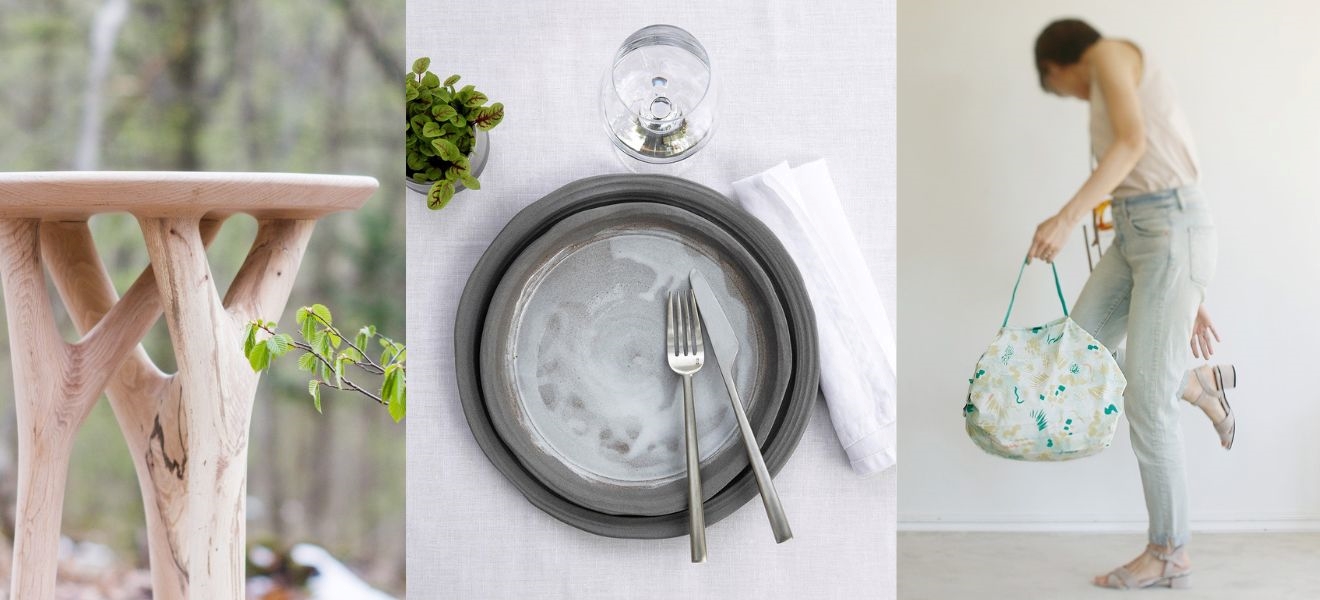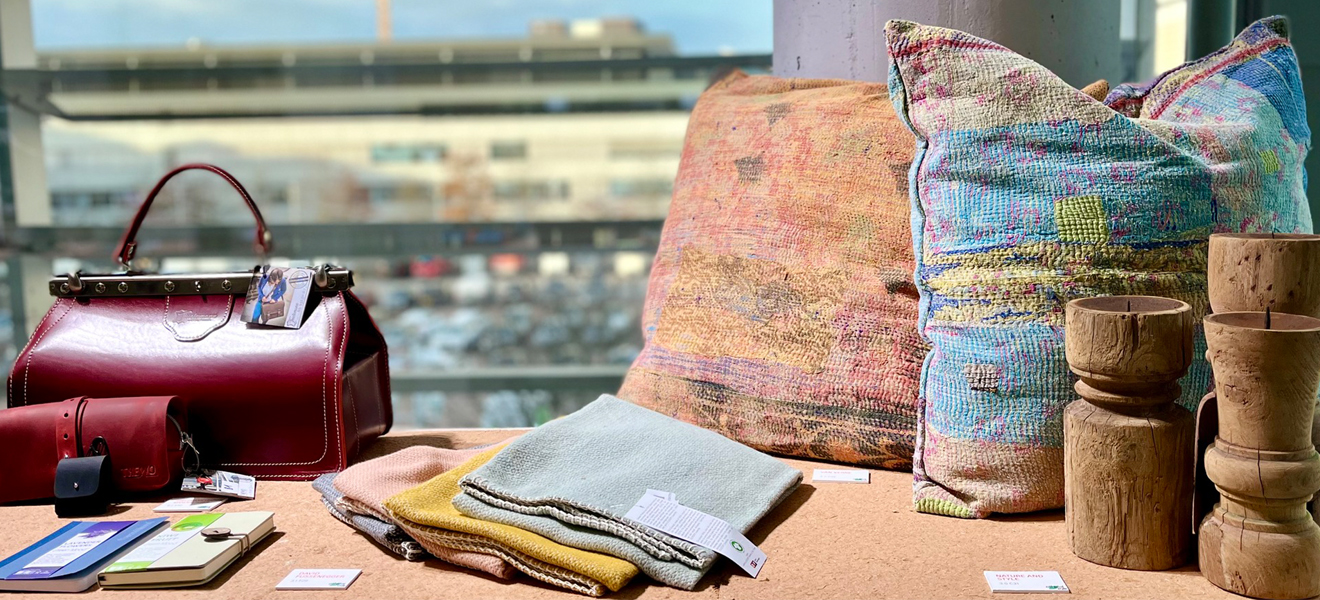Bamboo is a giant grass, it’s robust, and it’s also a real heavyweight in terms of sustainability and the latest look. Bamboo may formerly have been known as the poor man’s timber, but furniture designer Sandeep Sangaru has raised the status of this traditional staple and transformed it into a classy envoy for Indian tradition. He advocates this fast-growing material at the 2019 Ambiente partner country oasis, the Starry Night Café. In this interview we get to know a man who’s begun to free up his home country’s traditional techniques so they can be used in completely new ways.
Sandeep Sangaru is a time traveller, and he’s into regeneration. He takes techniques based on centuries-old wisdom and makes them attractive to the global marketplace of tomorrow. The 44-year-old uses design as a means of engaging us with ancient crafts. His multi-award-winning studio in Bengaluru, India specialises in furniture design and craft skills. Sanguru was born in Shillong, a town in the mountainous north-east of India known as the Scotland of the East, where he learned to live alongside nature from a young age. “Even as a child, I liked to take things apart and rebuild them, and I never lost that taste for experimentation”, he explains. He studied at the National Institute of Design in Ahmedabad and worked both in mechanical engineering and the Indian film industry, before focusing on this potential, unique to India: the magnificent objects which only home-grown craftspeople can create.


Your café uses bamboo furniture under a starry sky. How typical is this of India?
“Bamboo is part of everyday life in India’s north-eastern states. The café is inspired by the region’s rural life and the way people socialise there every day. A multitude of woven bamboo light fittings form a canopy overhead that looks like the branches of a tree. Sitting there makes you feel like you’re at a typical Indian village meeting place – we call them ‘chaupals’. The deep blue surroundings evoke the night sky and invite you to relax and enjoy.”
The café’s furniture and light fittings were designed in your Bengaluru studio. Bengaluru is known as India’s Silicon Valley, a metropolis more international and cosmopolitan than anywhere else in India. Whereabouts do you work in this buzzing city?
“Bengaluru has grown rapidly over the past few years, and this boom brings with it many structural challenges. I really love the weather there, which is mild all year round. My studio is on the outskirts of town, on a small plot of land.”

Keen-eyed observers can see bamboo growing in giant groves in India – literally see it: in ideal conditions it can grow over 1 m a day. Bamboo is brilliant and is recognised as the raw material for future generations because it is sustainable. Indeed, this tall green grass which many people believe is wood has lively, irregular surfaces which lend even industrially manufactured objects a unique and individual character.
Your studio focuses on making objects from bamboo. How did that come about?
“Initially I didn’t understand bamboo any better than the casual observer. It was only in the state of Tripura in north-east India, where I was teaching technical drawing to craftspeople, that I started to see bamboo in a different light. In Tripura, bamboo is part of the lifestyle. Everyone uses it in some shape or form, be it for bridge building, houses, fish traps or to shelter from the rain. Even children can weave baskets from bamboo before they reach school age. Everything I found there was both simple and functional. The industrial designer in me asked how far I could develop this multifaceted material.”

Your first design was a very unusual chair: it brought bamboo furniture straight into the 21st century.
“The chair had only one leg and looked like a triangle. Not only did I want to showcase bamboo in a new way, I also wanted to invent a completely innovative production technique. I started to rethink how to split and coat bamboo. This one-legged stool was a sort of joke product, a prototype which garnered a lot of attention. Next, I designed a furniture collection which won the 2009 Red Dot Design Award. I called it ‘Truss-Me‘, since nobody really trusted bamboo as a material. Benches and tables from this collection have been used in the Ambiente café.”
We’ve noticed the striking combination with steel and brass, and some of the bamboo strips are painted in different colours. The overall effect is light, yet sturdy. Furniture designers the world over must also want the same freedom in their designs, but bamboo is not their first choice of material yet. Why is that?
“It’s true that lots of designers have worked with bamboo, but in Europe there’s no traditional knowledge about it as a material. So, in the West people work bamboo as they do wood. Western designers, who need to import the bamboo before they even begin, opt for a more industrial aesthetic. It’s hard to obtain different types of bamboo on the market there. If you’re going to work with bamboo, you really need to be where the material is.”
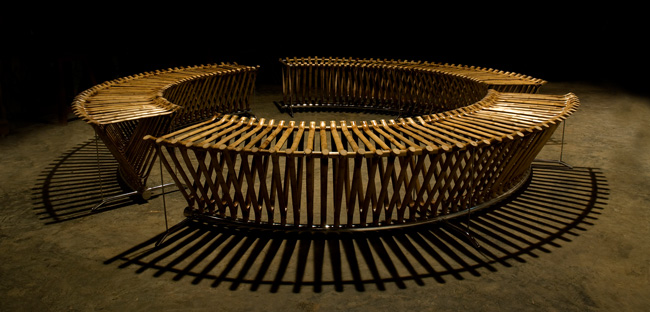
Overall, how would you say Indian furniture design fares on the international stage?
“We still have work to do here. If we are to develop original designs which showcase our rich heritage and take it into the future, whether in industrially produced furniture or traditionally crafted objects, we need support from the furniture industry and the government. Right from the start, our designers thought like entrepreneurs do – because there were hardly any jobs or careers for them in industry. Many started with their own studio, took a leap of faith and carved out their own niche.”

Sandeep Sangaru’s new way of working with bamboo supercharged his business. He experimented further; this took him to Kashmir, where with wood carvers he breathed new life into two almost-forgotten Persian craft techniques. Pinjra-kari and Khatamband are traditional carving methods which produce a highly complex geometric pattern from triangles, squares and hexagons. Although this fine decor made of interconnecting strands and gaps in dark walnut wood had previously been used mainly on balconies and ceilings, our designer applied it to chairs.

Why Kashmir?
“I found it fascinating how cultures in Kashmir coexist. Persian craft techniques had arrived hundreds of years ago in that single small valley which I visited during my time in Kashmir. Local craftspeople gave it a distinctive shape. I asked myself how I could harmonise this cultural craft skill with contemporary design.”
Seen from the outside, these complicated patterns, some of them floral, seem shrouded in mystery. The same could be said of this workers’ community, which gives the impression of being very private.
“It’s understandable, when a technique handed down from generation to generation is both unique and responsible for ensuring the community’s income. If they shared a large part of their knowledge with outsiders, it would lead to commercialisation which would in turn reduce its value.”
You soon also used terracotta with a traditional lacquering technique. Where did you come across this?
“In Channapatna, not far from Bengaluru, where they make beads and toys from oleander wood. It doesn’t pay well, which means few people are prepared to practise this ancient craft. The lacquering is based on a unique technique which I’m experimenting with, and the result was a bamboo chair using this lacquer. This in turn encouraged the craftspeople to tread new paths, without having to take up new tools. Later, I turned my attention to terracotta. I saw the diversity in Indian ceramics, like those in the state of Manipur, and studied traditional cooking methods. It reminded me of my childhood, when my grandparents cooked in terracotta vessels over a wood fire. Terracotta gives food an earthy flavour; I really like it. I’m currently focusing on hand-woven textiles, stonework and other techniques for employing sustainable materials.”
Dozens of craftspeople are busy in Sandeep Sangaru’s workshop – not only cutting, bending bamboo and lacquering, but also taking part in the design process. There are specialists from Tripura, woodworkers from Bihar and Kashmir and experienced lacquerware makers from Channapatna, all learning to develop new products: from the ideas on paper to the prototype to the market-ready item. Lots of workshops in India produce sustainably with a social conscience, and work closely with designers.
Manufacturing good products requires strong cooperation”. What does your philosophy mean to you?
“We create new knowledge, innovations and markets as a team. This in turn encourages the younger generation to carry on applying traditional techniques and using them more widely.”
I hear the iconic furniture designer George Katsutoshi Nakashima, who designed famous interiors for public buildings in the USA and was influenced by a deep religious conviction he developed during his stay in ashram in India, is someone you really admire. Are there others?
“Yes, there is furniture designer Hans J. Wegner. Also Pablo Picasso, Vincent van Gogh, Claude Monet and the sculptor Anish Kapoor, to name but a few. I admire the way they look at things. Perhaps because their work contains such a feel of raw energy, refined.”
Can you give us any tips on the easiest ways to make a room more beautiful?
“To my mind, lighting plays an important role in transforming a room into something new. The easiest makeover is changing colours and floor coverings. At home my style is reserved, even minimal. There are prototypes of my work all around the house.”

What does design mean to you?
“Design is a way of life. Design is everything we do, every day. Essentially, that means solving a problem with resources that are available where you are. I learned that when I watched craftspeople at work. To me, they were designers before ‘designers’ even existed. When I studied design, I applied ‘learning by doing‘, and came to see everything within a wider ecosystem. That’s when I realised: the solution is not always a tangible product, it might just be a change in the decisions we make. I don’t look at trends in order to do marketing. I look to the lifestyle and materials in my own country. I’m convinced that well-designed products are timeless. Instead of seeking out trends, we should strive for quality.”
